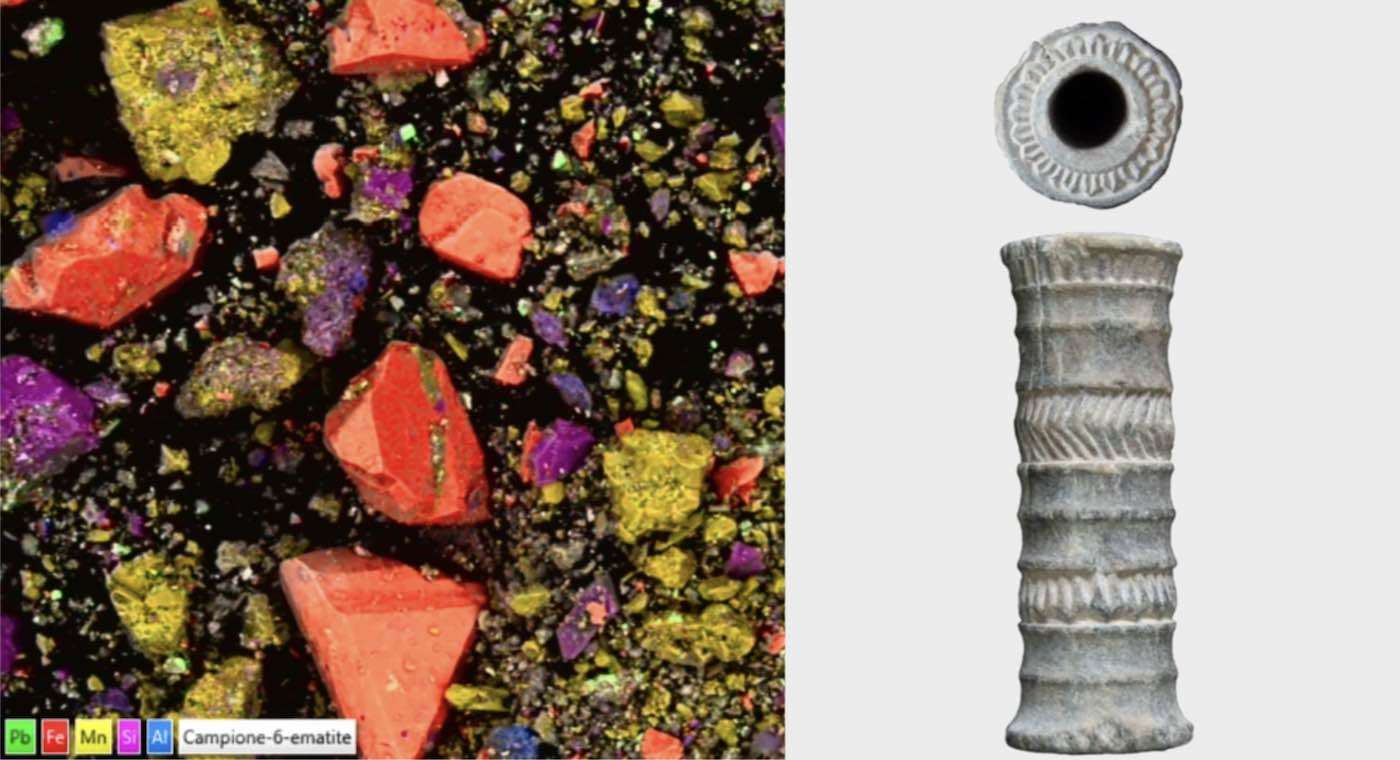Volunteers Plant One Million Moss Cuttings to Restore Bog and Improve Water Quality in England
Volunteers worked rain, wind, and sunshine (but mostly rain and wind) for 10 years planting sphagnum moss all around the area.

While the ancient Egyptians may have made eyeliner famous, a stunningly detailed archaeological find shows that ancient Iranians may have held the first patents on lipstick.
Detailed recently in a study in the journal Scientific Reports, a vial of deep red powder found during excavations of a pre-Achaemenid Iranian civilization dating to the Bronze Age seems to hold all the characteristics of modern makeup.
The vial, made of a carved greenish schist called chlorite, was located at a museum in Iran, but first surfaced when the River Hilal in Kerman province flooded several graveyards and dislodged items buried within.
The graves were dug by a powerful and well-documented civilization that predated the Persians known as Marḫaši in Sumerian script, and Paraḫšum in Akkadian.
Using a variety of imaging methods including liquid chromatography, mass spectroscopy, scanning electron microscopy, and X-ray diffraction, a team of scientists from the universities of Padova and Tehran identified the mineral composition of the purple substance found within the chlorite vial.
Made up of hematite (which produces its deep red color), manganite, braunite, galena, anglesite, and plant-based waxes, the mixture "bears a striking resemblance to the recipes of contemporary lipsticks," the authors wrote.
Their investigation obtained the first-ever radiocarbon date from a Bronze Age cosmetic in the ancient Near East, and placed its creation around the years 1,936 and 1,687 BCE.
Most of the cosmetic preparations that have been recovered from ancient civilizations are white powders that were used as foundation or eyeshadow, as well as the iconic eyeliners of the Egyptians and Persians made of black kohl or, unfortunately for their neurological health, lead.
"When did people start to paint their lips red? Which pigments were first used for coloring human lips? In the same framework, were people aware of the potential dangers of direct lead ingestion from mouth?" the authors discuss.
"While Ancient Iranian foundations, eye shadows, and rouges were mainly made of lead carbonates, the newly discovered cosmetic has minimal amounts of lead minerals," they continue.
"The contrast between the abundant use of lead-based substances apparently intended for the skin, and much less in this red paint, might suggest the makers of cosmetics were aware of the potential dangers of a direct oral lead ingestion."
They believe the plant-based substances may have been added to produce a pleasant aroma.
One hypothesis the researchers made, further strengthening the idea that shades of lipstick, like those sold today in prepackaged tubes or kits by Mac or L'Oreal, date all the way back to Ancient Marḫaši, is that the chlorite vial was intricately carved in a manner unlike any other previously identified cosmetics container from the period.
This, they suggest, meant that this particular product may have been packaged and sold individually-that buyers in high society knew that vials carved into the shape of a reed stalk were made by a particular craftsman.
Whether or not this idea of ancient branding is true, it's a fascinating window into the beauty routines of a people contemporary with some of the oldest urban civilizations on Earth.
SHARE This One-Of-A-Kind Window Into The Lives Of Ancient Iranians…
Be the first to comment